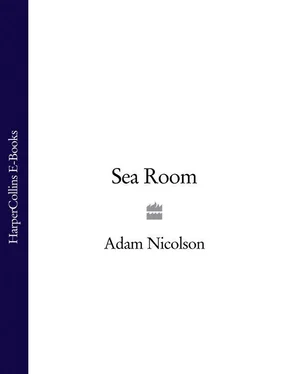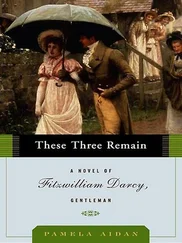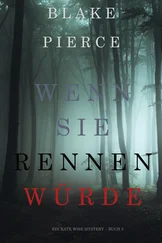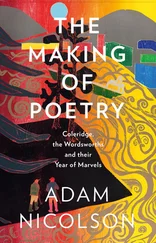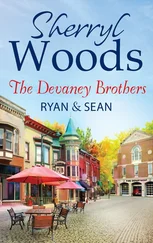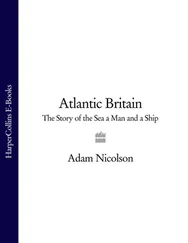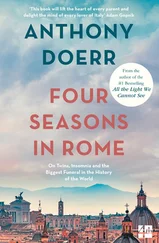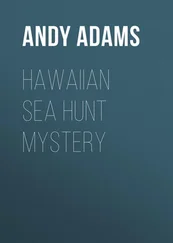They are as innocent and flighty as deer. The flock moves in its grazing like a shoal, a turn of a few degrees communicated somehow at the same instant throughout the pack. There is an ever-present suggestion of a tremor even in the way they stand and walk. But for all the beauty of that sight, that million-fingered responsiveness, this land-life on the grass seems to be no more than an interruption to their favoured state. They belong in the air. Lift yourself for a moment, so that more than your eyes and hat appear above the geese’s horizon and it is as if you have blown a breath of wind across the flock. The four hundred of them rise and shimmer like a single piece of cloth lifted by the breeze. The edge of the crowd nearest you moves first, and that beautiful supple sheet of the rest of them follows on with the same ripples in their white heads and black necks, the same slow crooner’s elasticity in the muscles, and same ineffable languor, all synchronised as if tied by invisible threads. A human crowd, suddenly made aware of a threat or danger, would shatter, each shard dispersing as if shot. The flock of geese does the opposite, more whole in the air than it had been on the ground, turning on the wind, a single wing, before beating out over the Minch, down over the small, grassless rock at the southern tip of Eilean an Tighe, Sgeir Mianish (‘the rock of the middle headland’ in Gaelic-cum-Norse) before flogging over into the wind to the equally inviting grass on Eilean Mhuire, a mile and a half away to the east, a coughing, guttural chatter as they pass.
I may be drawn to them but they don’t care for me. They are only here because people like me so rarely are. I have pursued them once but once only. Having disturbed them down on Mianish, I walked the mile back to the beach where the dinghy was tied up, launched it, rowed the mile across the bay to the landing place on Eilean Mhuire, hauled the dinghy up the beach there, climbed the two hundred feet up to the top of that island, walked the half mile down to its eastern tip, the promontory called Seann Chaisteal, the Old Castle, only to see the flock which had been grazing happily there for an hour since I had last disturbed them, lift with that wonder grace, a slow-motion departure, back across the tide-rippled sea to the headland where I had first encountered them.
Sometimes looking up from digging the garden, or sorting out the boat, or collecting firewood from the beach, I will see the flock of Shiant geese strung out against the sky, or wheeling in the gusts that ripple and billow off the back of Garbh Eilean. It is only a question of time before they leave, at some time in April. This is the gateway to summer and I have never witnessed it. All that I have ever noticed is a sudden absence. The paddled turf, the ubiquitous droppings, even the weather, all seem the same, but the geese have gone. It is like a death, or the descent of Proserpina into Hell, a removal of that life-presence which animates a place. The Shiants, then, are like an island from which the inhabitants have been cleared. Nothing has changed except the thing that changes everything.
Not until the nineteenth century did anyone understand this disappearance of the goose and its sudden re-emergence at the end of the year. There was a general belief that the birds hibernated somewhere or other, an idea that went back to Pliny and Aristotle before him. The barnacle goose was thought, but only by the credulous, to retreat into and later emerge from the goose barnacle, a crustacean which attaches itself like a mollusc to the rocks and has a shell which resembles the beak of goose. There is no need to be too condescending about this: still no one has any idea, for example, of what happens to the basking shark in winter. They disappear every autumn only to reappear the following spring. Whether they go out into the mid-Atlantic, or swim south to warm waters or hibernate on the sea floor, it remains invisible to us, and unknown.
There is a strange connection between the Shiants and the question of disappearing birds. According to the late-nineteenth-century Roman Catholic priest and folklorist, Father Allan McDonald of Eriskay, ‘the corncraik and stonechat are called eoin shianta on account of their disappearance in winter. The opinion is that they are dormant all winter, and that they should be so and not die makes people consider them eerie or uncanny or sianta.’
Certainly, that word runs true to the experience of a bird that departs without warning. The emptiness it leaves is haunted by the retinal image of its presence. You feel for a few days that the geese must still be there and that you are simply failing to see them. It is then that the Shiants come to feel like eerie islands.
The Gaelic word probably lies behind the Shiants. ‘Si’ in Gaelic is pronounced ‘sh’ and ‘sianta’ transliterates as ‘shanta’. The ‘i’ in the modern spelling of the word, which is a phonetic transcription of the Gaelic, is a mistake. Either ‘Siant’ or ‘Shant’, not ‘Shiant’, is the way it should be spelled and pronounced. Only those reading from maps ever say ‘Sheeant’. The Old Irish word sén , meaning ‘a blessing’ or ‘a charm’, derives eventually from the Latin signum , meaning a sign of any sort, especially the sign of the cross. From that comes the verb sénaim : ‘to bless’, ‘to make holy’. Its passive participle in Old Irish is sénta , a word which evolved in modern Irish Gaelic into séanta , meaning ‘consecrated’, ‘hallowed’ or ‘charmed’, with a haze of meanings hovering around its outer edges meaning ‘haunted’, ‘spooky’, ‘otherworldly’. This is the word which is often spelled in Scottish Gaelic sianta .
Examples of the name are scattered across Gaelic Scotland. There are sacred mountains in Jura, near Callander and in Ardnamurchan, all called Beinn Sheunta. There is a Loch Seunta, ‘Holy Loch’, in Cowal, and a cave, an Uaimh Shianta, ‘the hallowed’ or ‘the sacred’, in Applecross. There is a Shian Wood north of Oban and a stone circle at Shian Bank in Perthshire. In Skye, Martin Martin described a Loch Siant in the seventeenth century, of which the water was thought to cure diseases. There is a brackish Loch Shient in North Rona, although the derivation of that may be different, describing the sea spray with which the pool is filled. Most curiously of all, there is a record, in one of the Irish Chronicles for the second half of the fifth century, of the Isle of Man having its name changed ‘from Inis Falga to “Ellan Shiant”, that is “The Holy Isle”’.
The Shiant Islands, full of magnificence and strangeness, protected by the Stream of the Blue Men, standing out in the Minch tall, mysterious and beautiful, a challenge and an invitation to any man with a boat and a modicum of courage along hundreds of miles of coastline from Sutherland to Skye and from Ness to Barra, said, as so many of these islands are, to have been the hermitage of a Celtic saint in the Dark Ages: these are the Holy Islands of the Minch.
Most of the names of places on the Shiants are Gaelic and not particularly rich in association or significance. They describe parts of the islands in the way a Crusoe would, by looking at them, by saying what they are, rather than by associating them with anything that might have happened there in the distant past. So there is a Big Beach, a Beach with Boulders, a Washing Place, a Cormorant Head, some Rocks of the Bay, a Seal Point, the Kittiwake Rocks, the Hole of the Seals – the natural arch at the north-east corner of Garbh Eilean – and the Point of the Fank (the gathering place for sheep on Eilean Mhuire). Most of these still have the attributes by which they are named. Sheep are still gathered on Eilean Mhuire at the Bid na Faing. The seals do indeed lounge and wail on the point that is named after them. There is a kittiwake colony not far from their rocks, and there are shags (the Gaelic word sgarbh does not distinguish between a cormorant and a shag) forever standing with their arms outstretched, drying their feathers on the point named after them.
Читать дальше
